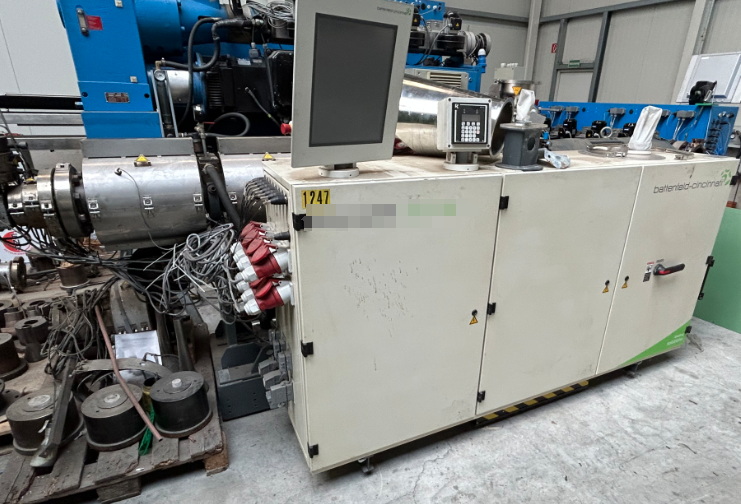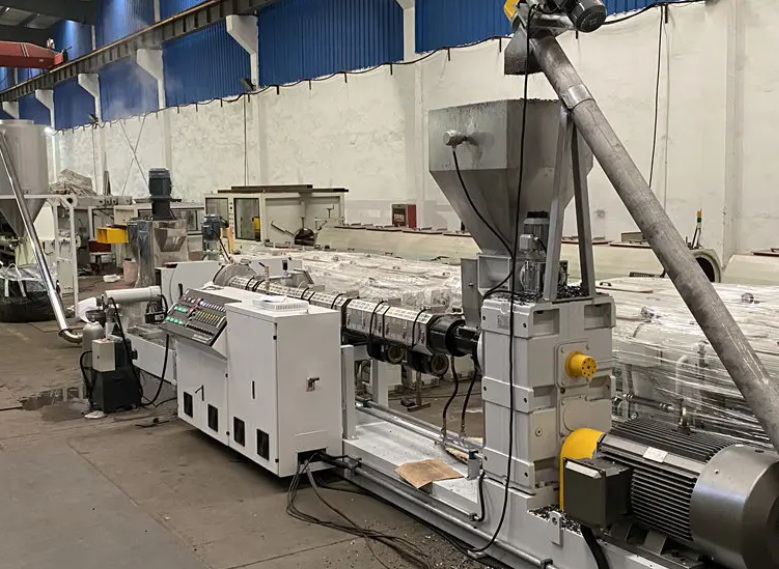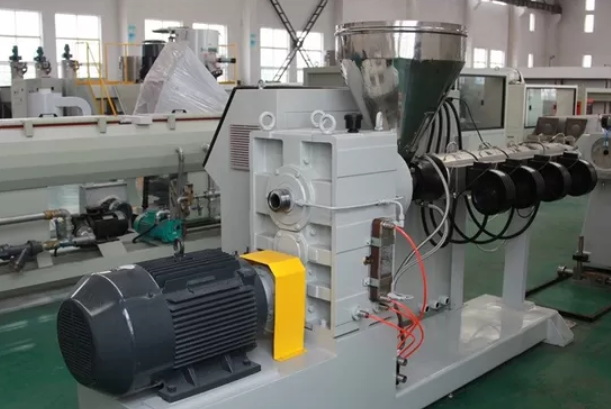Content Menu
● Introduction to Extrusion Bending Equipment
● Key Benefits of Extrusion Bending Equipment
>> 1. Precision and Accuracy
>> 2. Efficiency and Speed
>> 3. Cost-Effectiveness
>> 4. Versatility
>> 5. Safety Features
● Applications of Extrusion Bending Equipment
● Choosing the Right Extrusion Bending Equipment
● Maintenance and Troubleshooting
● Advanced Technologies in Extrusion Bending
● Future Developments and Trends
● Conclusion
● FAQ
>> 1. What are the primary benefits of using extrusion bending equipment?
>> 2. How does extrusion bending equipment enhance safety in the workplace?
>> 3. What types of materials can extrusion bending equipment handle?
>> 4. How does extrusion bending equipment contribute to cost savings?
>> 5. What are some common applications of extrusion bending equipment?
● Citations:
Extrusion bending equipment is a crucial tool in modern manufacturing, offering numerous benefits across various industries. This article will delve into the advantages of using extrusion bending equipment, exploring its precision, efficiency, cost-effectiveness, and versatility.

Introduction to Extrusion Bending Equipment
Extrusion bending equipment is designed to bend and shape metal into precise forms, often used in industries such as aerospace, automotive, and construction. Unlike traditional bending methods, extrusion bending allows for complex shapes and profiles without compromising the material's integrity. This process involves using dies to shape the material, ensuring that the final product meets exact specifications.
Extrusion bending equipment is typically categorized into different types based on the bending method and the material being processed. For instance, there are machines specifically designed for aluminum extrusions, which are commonly used in architectural and structural applications. These machines can produce a wide range of profiles, from simple angles to complex curves.
Key Benefits of Extrusion Bending Equipment
1. Precision and Accuracy
Extrusion bending equipment ensures precise and accurate bends, which is critical in applications where exact dimensions are required. This precision minimizes errors and ensures consistency in the final product. In industries like aerospace, where components must meet stringent specifications, extrusion bending equipment is indispensable.
For example, in the production of aircraft components, precision is paramount. Extrusion bending equipment allows manufacturers to create complex shapes with precise angles and dimensions, ensuring that these components fit perfectly into the aircraft's structure.
2. Efficiency and Speed
These machines can produce a large volume of accurately bent parts quickly, making them essential for meeting tight deadlines in manufacturing processes. The efficiency of extrusion bending equipment is particularly beneficial in high-volume production environments, where speed and accuracy are equally important.
In the automotive industry, for instance, extrusion bending equipment is used to manufacture vehicle parts such as door frames and roof rails. The ability to produce these parts quickly and accurately helps automakers meet production targets and maintain quality standards.
3. Cost-Effectiveness
Extrusion bending equipment reduces material wastage by making precise bends, minimizing scraps and lowering costs. It also enhances efficiency, allowing for faster production and lower labor costs. By optimizing production processes, manufacturers can reduce overhead expenses and improve profitability.
Additionally, the precision of extrusion bending equipment reduces the need for rework, which can be costly and time-consuming. By producing parts correctly the first time, manufacturers avoid additional labor and material costs associated with correcting errors.
4. Versatility
Extrusion bending equipment can handle various materials and thicknesses, making it suitable for diverse applications across different industries. From thin aluminum profiles used in architectural features to thick steel sections used in construction, extrusion bending equipment can adapt to different material requirements.
This versatility is particularly beneficial in industries where a variety of materials are used. For example, in the construction sector, extrusion bending equipment can be used to create both structural elements and decorative features, depending on the project's needs.
5. Safety Features
Automated extrusion bending machines reduce the need for manual labor, improving workplace safety by minimizing the risk of accidents associated with manual bending methods. Manual bending often involves physical strain and exposure to hazardous conditions, which can lead to injuries.
By automating the bending process, manufacturers can protect workers from these risks, creating a safer working environment. Additionally, automated systems can operate continuously without breaks, further increasing production efficiency.

Applications of Extrusion Bending Equipment
Extrusion bending equipment is widely used in industries such as:
- Aerospace: For creating complex shapes in aircraft components, such as wing spars and fuselage frames.
- Automotive: For manufacturing vehicle parts with precise bends, including door frames, roof rails, and exhaust systems.
- Construction: For producing structural elements with accurate dimensions, such as building frames and staircases.
In each of these industries, extrusion bending equipment plays a critical role in ensuring that components meet exact specifications and are produced efficiently.
Choosing the Right Extrusion Bending Equipment
When selecting extrusion bending equipment, consider factors such as the type of material, desired bend complexity, and production volume. CNC-controlled machines offer precision and repeatability, making them ideal for high-volume production. These machines can be programmed to perform complex bends with high accuracy, reducing the need for manual adjustments.
For smaller production runs or more specialized applications, manual or semi-automatic machines might be more suitable. These machines provide flexibility and can be easily adjusted for different bending requirements.
Maintenance and Troubleshooting
Regular maintenance is crucial to ensure the longevity and efficiency of extrusion bending equipment. Common issues include die wear and misalignment, which can be addressed through routine inspections and adjustments. Proper lubrication of moving parts and regular cleaning of the machine also help prevent wear and tear.
Troubleshooting often involves identifying the source of the problem, whether it's a mechanical issue or a programming error. In many cases, issues can be resolved by checking the machine's settings and ensuring that all components are properly aligned.
Advanced Technologies in Extrusion Bending
Recent advancements in technology have further enhanced the capabilities of extrusion bending equipment. For example, the integration of AI and IoT technologies allows for real-time monitoring and optimization of the bending process. This can include predictive maintenance, where sensors detect potential issues before they occur, and automated quality control systems that inspect each part as it is produced.
These technologies not only improve efficiency but also enhance product quality by ensuring that every part meets precise specifications. In industries where quality is paramount, such as aerospace and automotive, these advancements are particularly valuable.
Future Developments and Trends
Looking ahead, the future of extrusion bending equipment is likely to involve even more sophisticated technologies. The use of robotics and automation will continue to increase, allowing for more complex shapes and higher production volumes. Additionally, there will be a greater focus on sustainability, with manufacturers seeking equipment that minimizes environmental impact while maintaining efficiency.
As industries evolve and new materials are developed, extrusion bending equipment will need to adapt to handle these changes. This could involve designing machines that can process advanced materials like carbon fiber or nanomaterials, which require specialized handling and bending techniques.
Conclusion
Extrusion bending equipment offers significant advantages in precision, efficiency, cost-effectiveness, and versatility, making it an indispensable tool in modern manufacturing. By understanding these benefits and selecting the appropriate equipment, industries can enhance their production processes and meet the demands of complex projects. As technology continues to evolve, the role of extrusion bending equipment will only become more critical in shaping the future of manufacturing.

FAQ
1. What are the primary benefits of using extrusion bending equipment?
Extrusion bending equipment provides precision, efficiency, cost-effectiveness, and versatility, making it ideal for industries requiring complex shapes and accurate dimensions.
2. How does extrusion bending equipment enhance safety in the workplace?
Automated extrusion bending machines reduce manual labor, minimizing the risk of accidents associated with manual bending methods and improving overall workplace safety.
3. What types of materials can extrusion bending equipment handle?
Extrusion bending equipment can handle a variety of materials, including metals like aluminum, steel, and copper, as well as plastic and composite materials.
4. How does extrusion bending equipment contribute to cost savings?
By reducing material wastage and enhancing production efficiency, extrusion bending equipment minimizes scraps and lowers labor costs, leading to overall cost savings.
5. What are some common applications of extrusion bending equipment?
Extrusion bending equipment is commonly used in aerospace, automotive, and construction industries for creating complex shapes and precise bends in various components.
Citations:
[1] https://www.autolinkcnc.com/en/blog/what-are-the-benefits-of-a-pipe-bending-machine/
[2] https://axenics.com/blog/what-are-the-benefits-of-a-tube-bending-machine
[3] https://www.krrass.com/the-benefits-of-bending-machine-for-automated-production/
[4] https://pines-eng.com/machines/extrusion-benders
[5] https://www.inductaflex.com/metal-bending-videos/
[6] https://www.youtube.com/watch?v=baM5hNnBcT8
[7] https://testbook.com/objective-questions/mcq-on-extrusion--5eea6a0d39140f30f369e2ec
[8] https://www.alineautomation.com/what-to-know-about-aluminum-extrusion-bending/
[9] https://accurlmachines.com/bending-machine-handbook-types-advantages-and-how-to-choose-the-best-bending-machine/
[10] https://baisonlaser.com/blog/bending-machines-types-and-applications/
[11] https://ud-machine.com/blog/bend-machine/
[12] https://www.adhmt.com/the-basic-guide-to-bending-machine/
[13] https://amobgroup.com/why-buy-an-electric-bending-machine-find-the-benefits
[14] https://www.trumpf.com/en_GB/solutions/advantages-of-trumpf-machines/advantages-of-bending-machines/
[15] https://pines-eng.com/machines/extrusion-benders
[16] https://www.trumpf.com/en_CA/solutions/advantages-of-trumpf-machines/advantages-of-bending-machines/
[17] https://www.alexandriaindustries.com/white-papers/bending-forming-aluminum-extrusions/
[18] https://amobgroup.com/discover-the-advantages-of-choosing-a-100-electric-tube-bending-machine
[19] https://shop.machinemfg.com/mastering-aluminum-extrusion-bending-techniques-design-and-applications/
[20] https://www.gabrian.com/aluminum-extrusion-bending/






















